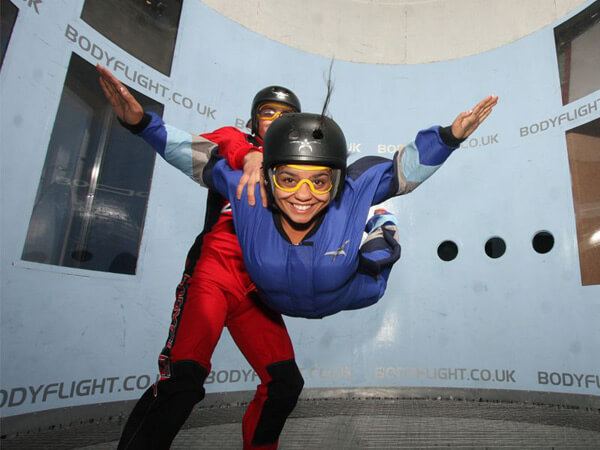 | ||
Progression of bodyflight
Bodyflight, or 'body flight', is the art of 'flying your body' in a controlled manner. This include turns, rolls, lateral movement, fall rate control, and other acrobatics in the air. The skill of bodyflight makes it possible for skydivers to fly closer to each other while they are falling, to allow them to link together in formation skydiving, then fly apart to a safe distance before opening parachutes. Many skills of bodyflight can be learned in a vertical wind tunnel, to enable skydivers to become better at controlling their bodies in the sky.
Contents

Bodyflight is accomplished via increasing/decreasing the drag of your body, using arms and legs as rudders for bodyflight motion control, as well as other techniques similar to that of an airplane. Professional athletes who fly through the air for long distances, such as ski jumping, have also used certain bodyflight techniques to increase jumping distance by manipulating their bodies to be more airfoil-like. Frequent visitors to a vertical wind tunnel are often called 'tunnel rats', much like frequent visitors to ski slopes are called 'ski bums'.
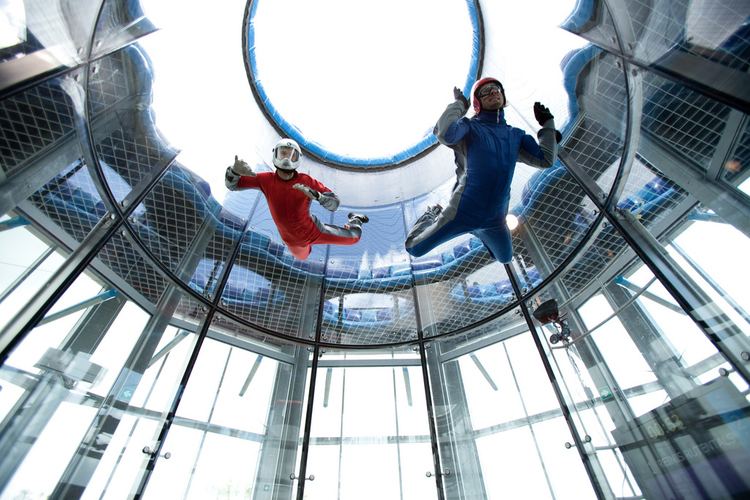
Some body flying enthusiasts develop their tunnel-flying skills not for sky diving training, but in order to be able to give professional performances. AERODIUM Latvia has a group of professional performers – air acrobats. The team started with a performance at the closing ceremony of the Winter Olympics 2006, and now performs in mobile and stationary vertical wind tunnels all around the world.
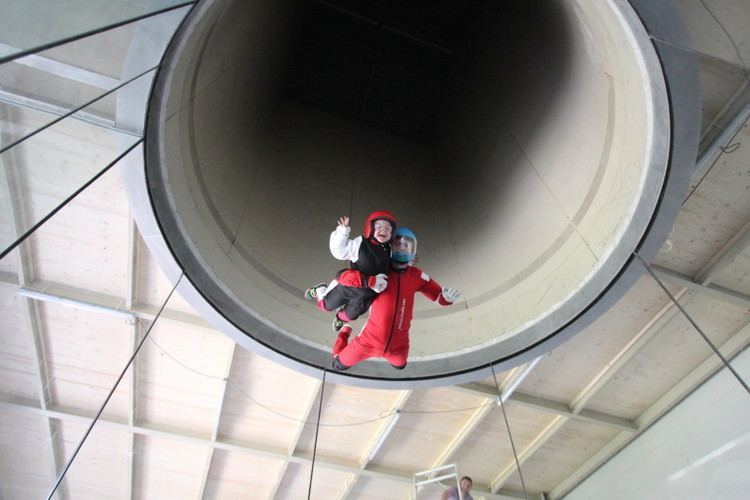
Bodyflight stockholm first time flyer
Skills progression

In the early days of tunnel flying, the IBA progression was created to help create spotting and safety guidelines that fit the flying and coaching techniques being commonly practiced. This type of flying is still taught today. The progression was crafted in an order that focuses on a structured approach which uses increasing wind speeds with a focus on static flying styles. This progression focused on an end goal of performing traditional skydiving maneuvers in a wind tunnel.
The standard IBA progression:
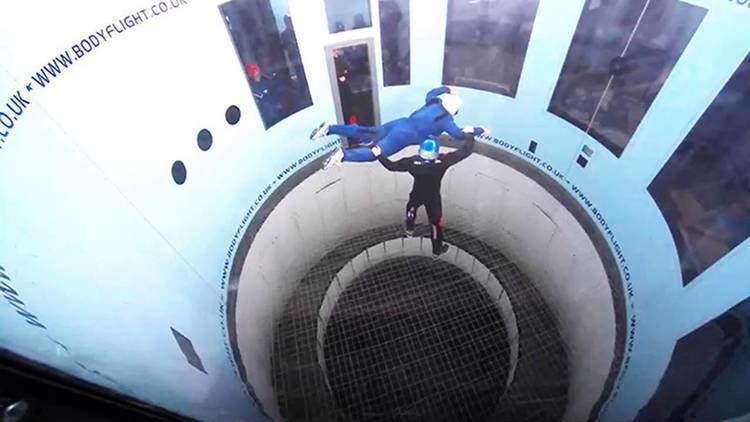
The sport of tunnel flying is changing rapidly and new techniques have been developed by flyers around the world. These techniques do not stick to the traditional IBA static flying approach. New techniques utilize similar spotting techniques, but apply a different approach to bodyflight. These techniques teach a movement based approach which focuses on belly and back flying, carving, and mastery of transitions. This flying is normally taught at lower wind speeds before increasing the power of the tunnel and thus the speed of the flying.
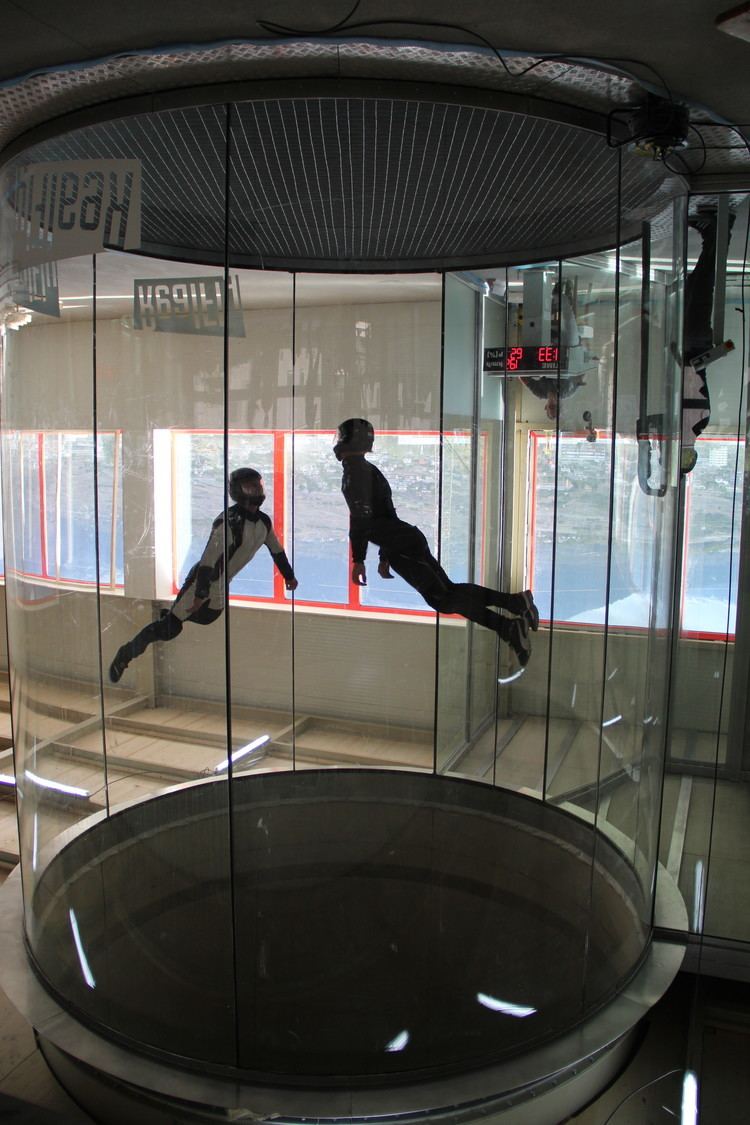
This style of training spawned in Europe, grew to be known around the world as dynamic flying, spawned a new widely accepted competition format (D4W and D2W), and these techniques are now being taught and applied all over the world.
